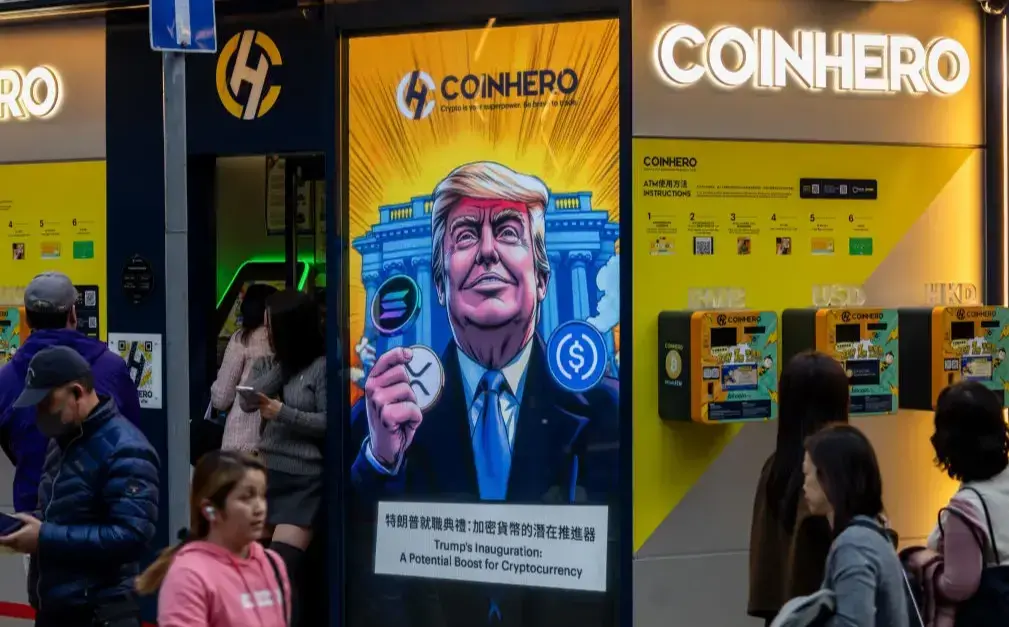A brief review of the rise and fall of the "king of Bitcoin exchanges": three years of glory and ten years of atonement
Author: Chris, Techub News
When it comes to leaving a significant mark in the history of Bitcoin, Mt. Gox is undoubtedly one of them. This trading platform, which once held over 70% of the global Bitcoin trading market, has a journey from glory to bankruptcy that is both dramatic and filled with profound lessons.
The story of Mt. Gox began in 2010, founded by a programmer named Jed McCaleb. Initially, Mt. Gox was a trading platform for "Magic: The Gathering" cards, named after the abbreviation for "Magic: The Gathering Online Exchange." In July 2010, McCaleb keenly recognized the potential of Bitcoin and transformed the platform into a Bitcoin exchange. This decision provided a new trading platform for Bitcoin, making digital currency trading much more convenient. McCaleb's vision and innovative spirit laid the foundation for the Bitcoin trading market, but it also marked the beginning of Mt. Gox's tumultuous history.

2011 was a year of rapid rise for Mt. Gox. During this year, it quickly became one of the largest Bitcoin trading platforms in the world, accounting for 70% to 80% of the global Bitcoin trading volume. At this time, the Bitcoin market was in an explosive phase, with a large influx of investors, and Mt. Gox became their preferred platform. In the same year, McCaleb decided to sell the exchange to a Frenchman, Mark Karpeles. Karpeles not only became the largest shareholder of Mt. Gox but also took on the role of CEO, beginning to lead the platform's operations.
Karpeles was a person with a strong technical sensitivity, constantly improving the platform's technical architecture, making trading faster and user experience better. Under his leadership, Mt. Gox continued to expand, quickly becoming a major platform for Bitcoin trading. However, behind the rapid development lay enormous hidden dangers. Although Karpeles's management propelled Mt. Gox's rapid growth, his attention to security and regulation was clearly insufficient.

In June 2011, Mt. Gox experienced a thrilling storm. This storm originated from a hacker who stealthily infiltrated the exchange's system using an auditor's credentials. This hacker meticulously orchestrated a price manipulation, instantly driving the price of Bitcoin from several dollars down to just 1 cent each.
One can imagine the traders at that time, seeing the numbers on their screens flashing wildly, plummeting from several dollars to 1 cent, feeling as if they were on a roller coaster, terrified. In just a few chaotic minutes, the hacker successfully transferred about 2,000 Bitcoins.
After the incident, the management team of Mt. Gox immediately realized the seriousness of the situation. As a Bitcoin exchange, although only over $2,000 worth of Bitcoins were transferred at that time, such an event served as a wake-up call for Mt. Gox. They quickly took action to transfer a large amount of remaining Bitcoins to cold wallets. A cold wallet is a storage method that is not connected to the internet, greatly enhancing the security of Bitcoins and effectively preventing further theft by hackers.
Although this incident exposed the vulnerabilities in Mt. Gox's security management, it also demonstrated their rapid response capability in crisis management. This event became an important warning, making Mt. Gox and other exchanges realize that only by continuously enhancing security measures could they remain invulnerable in the ever-changing world of cryptocurrency. Mt. Gox's swift response not only saved a large amount of Bitcoins but also laid a solid foundation for future security protection efforts.
In 2013, Mt. Gox reached its peak period. At that time, nearly 7 out of every 10 Bitcoin transactions were completed on Mt. Gox. This once inconspicuous small exchange had become the largest Bitcoin trading platform in the world. However, amidst this prosperity, a long-simmering storm was quietly brewing.
 BTC trading volume on BTC China, Mt. Gox, and Bitstamp (from August 1 to December 23, 2013). Source: BitcoinCharts
BTC trading volume on BTC China, Mt. Gox, and Bitstamp (from August 1 to December 23, 2013). Source: BitcoinCharts
One day in May, the U.S. Department of Homeland Security (DHS) quietly took action, freezing the accounts of its U.S. subsidiary on the grounds that Mt. Gox was not registered as a money transmission service. When this news broke, the senior management of Mt. Gox felt as if they had been struck by lightning. This action not only froze Mt. Gox's funds in the U.S. but also put it in an unprecedented cash flow crisis.
Imagine the atmosphere at Mt. Gox's headquarters at that time, filled with tension. Employees anxiously made phone calls, trying to contact various parties for solutions. In the conference room, the management team held an emergency meeting, their faces clouded with worry. The founder of Mt. Gox might have been staring out the window, contemplating this sudden predicament.
The DHS's action was like a sharp knife, deeply cutting into Mt. Gox's compliance wounds. Mt. Gox had been so busy expanding its business that it failed to pay timely attention to and comply with the strict financial regulations in the U.S. This incident not only exposed its shortcomings in compliance but also foreshadowed more regulatory challenges ahead.
This seizure caught Mt. Gox off guard, but it also provided an important lesson. The management began to realize that only by steadily advancing on the path of compliance could they truly ensure the long-term development of the exchange. In the global digital currency market, compliance and security are equally important and cannot be neglected.
On February 7, 2014, Mt. Gox announced the suspension of all Bitcoin withdrawals, citing suspicious activity and indicating that the issue was due to a vulnerability in the Bitcoin software that made transactions appear incomplete, potentially leading to Bitcoins being sent multiple times. However, just seventeen days later, on February 24, things worsened. Mt. Gox issued another announcement, this time declaring a permanent halt to Bitcoin trading. This news struck like a heavy hammer, completely shattering users' confidence. Four days later, Mt. Gox filed for bankruptcy protection. This once-glorious exchange was now on the brink of bankruptcy. Karpeles admitted to losing 744,408 Bitcoins belonging to customers and 100,000 Bitcoins held by the exchange itself, and this hacker attack rendered Mt. Gox unable to pay back customers' Bitcoins, leading to its bankruptcy. At this moment, Mt. Gox's reputation completely collapsed, and user confidence disintegrated.

In March of the same year, Mt. Gox found itself at a crossroads of fate. They applied for bankruptcy protection in the Tokyo District Court, officially entering the bankruptcy liquidation process. For what was once the largest Bitcoin exchange in the world, this was undoubtedly a bleak moment.
Just when everyone thought hope was dim, Mt. Gox brought unexpected news. They claimed to have recovered 200,000 Bitcoins. These Bitcoins were found in the company's old wallets, and this news was like a ray of light in the darkness, bringing a glimmer of hope to the desperate victims.
However, the recovered 200,000 Bitcoins were just the tip of the iceberg, with a large number of Bitcoins still unaccounted for. This discovery was not only a spark of hope but also a mirror reflecting the chaos and flaws in Mt. Gox's management system. How were these Bitcoins lost? How did the hacker breach the system? These questions remained unanswered, and behind each question could lie management negligence.
In 2015, Mark Karpeles was arrested in Japan on charges of data manipulation and embezzlement of customer funds, facing multiple charges.
In court, he repeatedly maintained his innocence. He detailed the operational processes of the exchange and tried to prove that the lost Bitcoins were due to a hacker attack rather than his own negligence. Inside and outside the courtroom, voices of supporters and opponents rose and fell, emotions running high. Supporters believed he was innocent and unjustly accused, while opponents argued that he should be held responsible for the collapse of Mt. Gox and face legal consequences.
In July 2016, after a year of trial and detention, Karpeles was finally granted bail. Karpeles's arrest and trial became a focal point of global attention.

Mt. Gox founder Mark Karpeles
In 2018, the Tokyo District Court approved the transition of Mt. Gox from bankruptcy liquidation to civil rehabilitation, allowing for the sale of remaining Bitcoins to compensate victims.
According to this decision, Mt. Gox would compensate victims by selling the remaining Bitcoins. These Bitcoins had been locked in the exchange's wallets, and now they would be used to offset the enormous losses caused by the hacker attack and management chaos. Although the value of these Bitcoins could not fully compensate for all losses, this decision undoubtedly brought new hope to the victims.
In 2019, Mark Karpeles was convicted of data manipulation but acquitted of embezzlement charges, receiving a two-and-a-half-year suspended sentence. Although Karpeles avoided the harshest penalties, his reputation was already damaged.
By November 2021, a compensation agreement was reached between the Japanese court and Mt. Gox's creditors, establishing a registration and compensation process. Approved creditors could submit compensation claims through an online system.
Trustee Nobuaki Kobayashi announced at a press conference that victims could begin submitting compensation claims. This news once again sparked strong reactions among the victims. Kobayashi detailed the application process and assured that the entire process would be strictly executed according to the agreement, ensuring that every victim would receive the compensation they deserved.
By September 2023, Kobayashi issued another statement, announcing the extension of the deadline for repaying creditors to October 31, 2024. This decision was made to ensure that all victims would have ample time to submit their claims, avoiding any omissions or missed opportunities. Kobayashi stated, "We hope that every victim can receive the compensation they deserve, and no one's rights should be overlooked." The plan includes the payment of 142,000 Bitcoins, 143,000 BCH (Bitcoin Cash), and 6.9 billion yen. In May 2024, some Bitcoins from Mt. Gox's wallet were transferred out, marking further progress in the repayment plan.
The story of Mt. Gox not only reveals the many risks and challenges of Bitcoin's early development but also provides important lessons for the future development of the entire cryptocurrency industry. Through these events, the rise and fall of Mt. Gox showcase the risks and opportunities within the cryptocurrency industry. This history reminds us that despite the continuous evolution of technology and markets, security and compliance remain the cornerstones of ensuring the healthy development of the industry.
In reflecting on this history, we see that advancements in technology and market development cannot replace the importance of security and compliance. The rise and fall of Mt. Gox serve as a warning, reminding us that in the pursuit of innovation and growth, we must not overlook fundamental security measures and regulatory requirements. This is not only a reflection on the past but also an insight for the future.









